Do you like to crunch on fresh cucumbers in winter? Try growing them on your windowsill. Moreover, it is not so difficult. We will tell you about all the intricacies of this process.

In fact, growing on a windowsill is an extremely exciting activity, and not just a great way to stock up on food. Most often, greens are grown at home, but there are also experimenters who manage to harvest mushrooms, strawberries and even pineapples from their own windowsills.
We will talk about how to grow cucumbers - a vegetable that is popular with us at any time of the year.
The ideal time for growing cucumbers on a windowsill is February-March, when daylight hours become longer. But with the help of lamps (incandescent, fluorescent, LED, etc.), you can artificially extend the day even at the beginning of winter. In this case, you can plant cucumbers much earlier.
Varieties and hybrids of cucumbers for growing at home

Not all varieties and hybrids of cucumbers can be grown at home. There are two options: you can choose bee-pollinated cucumbers, which will have to be pollinated by hand, or use parthenocarpics, which do not require pollination.
For cultivation on the windowsill, choose varieties and hybrids of cucumbers that have the following properties: unpretentiousness, shade tolerance and good branching ability.
The lifespan of cucumbers on the windowsill is quite short - a maximum of 2 months from the moment of first shoots.
How to grow cucumbers on a windowsill?

The process of planting cucumbers is not complicated, but you will get a good result if you take into account some important nuances.
1. The container for growing will need to be large enough - at least 5 liters for each plant. A five-liter drinking water bottle will do, the top of which can be carefully cut off.
2. Now let’s start preparing the soil – you will need about four liters of it. For these purposes, garden soil, ready-made soil for growing vegetables mixed with perlite and rotted compost (in a ratio of 1:1:4), and universal soil for growing (with a pH of 6.3-6.8) are suitable. The soil must be disinfected. There are several ways: you can steam it over boiling water, heat it in the microwave, or pour it with a fungicide.
3. Seeds can be pre-treated with growth stimulants or microelements. You can also “harden” them before sowing: put them in a damp cloth and keep them on the bottom shelf of the refrigerator for several days.
4. Pour about 2-3 cm of drainage into the container.
5. Fill the container with wet soil, leaving it 3-4 cm short. Make holes and sow 3 seeds in each. The distance between them should be 1-2 cm. Planting depth is 2-3 cm. Cover the seeds with soil. After sowing, be sure to water the seeds.
6. Cover the container with polyethylene and place it in the warmest place in the house. There it will remain until the first shoots appear. After this, the container should be placed on the windowsill, but under no circumstances place it near the radiator - this will destroy the moisture-loving cucumbers. Conduct moderate watering daily (in the morning), because cucumbers love moisture. When using additional lighting, water the seedlings 2 times a day. The water should be warm and settled.
When the first leaves appear, be sure to thin out the seedlings: leave only the largest and strongest specimens.

7. In the phase of 2-3 leaves, feed the plants with mineral (a mixture of 10 g ammonium nitrate, 10 g double superphosphate, 8 g potassium sulfate per 10 liters of water - use half a liter of solution at a time) or organic fertilizers. Next, feed the seedlings once a month. You can also use complex fertilizers for cucumbers (apply them according to the instructions). Do not apply fertilizers to dry soil: this can cause burns to the roots. Make it a rule - fertilize only after watering!
The 5-leaf phase is a “turning point”: during this period, the seedlings will need support - for example, a plastic trellis. During the same period, pinch the top of the seedling - this will allow the side shoots to begin to actively grow. As a result, you will get low shoots from which you will reap a large harvest.
8. The flowering period is an extremely crucial moment. To achieve abundant flowering, feed the cucumbers with an infusion of wood ash. It is prepared like this: pour 1 glass of ash into 10 liters of hot water, leave for 24 hours, strain. Use 0.5 liters of this infusion for each plant. Feed cucumbers in the same way during the fruiting period.
9. 1-1.5 months after the first shoots, the long-awaited greenery will appear. Remove cucumbers that are a week old. Remember: the more often you pick fruits, the faster new ones will form.

We wish you successful experiments and, of course, a good harvest of fresh, crispy cucumbers.
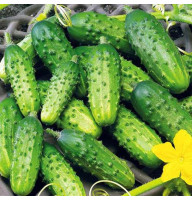
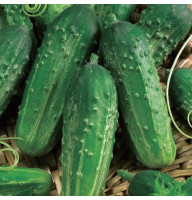
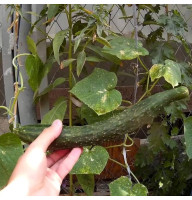

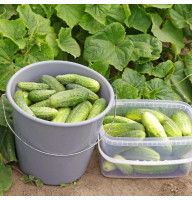
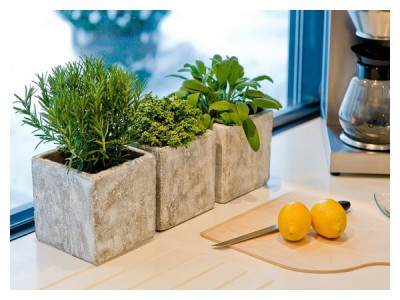


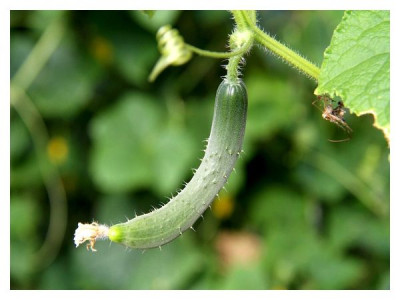
Write a comment